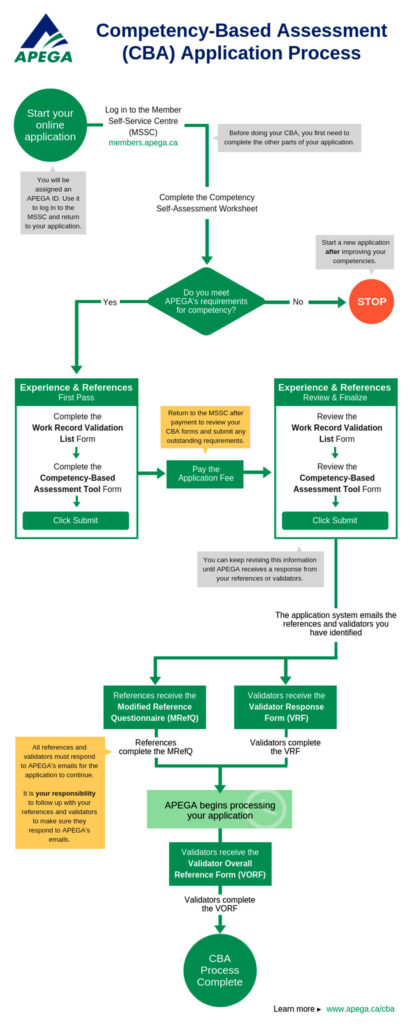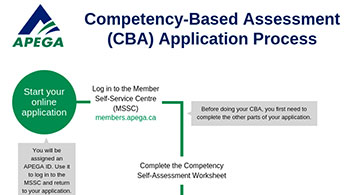 This is the fourth of several in a series of writing that provides examples on how to complete your experience requirements in applying for your APEGA licensure requirement. The examples presented here are based on my personal experience and are not necessarily the same as yours. This will serve only as guide and is not to be taken as a “copy and paste” approach.
This is the fourth of several in a series of writing that provides examples on how to complete your experience requirements in applying for your APEGA licensure requirement. The examples presented here are based on my personal experience and are not necessarily the same as yours. This will serve only as guide and is not to be taken as a “copy and paste” approach.
For those who will write their Experience Records, I recommend that you start and follow the examples below. The previous competencies examples can be found on the Alberta Filipino Journal website under the Education Section: (http://www.albertafilipinojournal.com/category/living/education/). This will complete the 22 Key Competencies in the succeeding issues of the Alberta Filipino Journal. The complete competency category can be found on the APEGA website.
Competency Category 3 – Project and Financial Management
3.1 Project Management Principles
• Awareness of resource planning, budgeting, change management, scope management, scheduling, and unforeseen issues in managing a project from start to end
• Understand the impacts that benefits and risks of various design solutions have on a project
• Understand the needs and expectations of internal and external clients
Example: During the implementation of the projects that I designed, Requests for Information (RFIs) were sent by either the contractor or the client. Additional information is required on some items that are not captured in detail in the construction drawings. I personally understand the impact of missed details after Issue for Tender Drawings are sent to client. I have experienced that a change in the Mechanical Equipment will impact the design of supporting structure because of the variance in weights and dimensions. During the shop drawing reviews – these items must be highlighted and provided a win-win solution between my department and the Mechanical Department that would not affect the cost of the structure. Any change will have a domino effect, and this must be considered with due diligence in resolving the issue. If the change is inevitable, then the most cost-effective approach must be done. In this case, the mechanical equipment used was changed to fit the structure but it was still a more cost effective solution rather than changing the supporting structures. I recorded the situation as a lesson learned and a reminder to have consistent coordination with other disciplines so that this situation would not happen again in the future.
3.2 Finances & Budget
Understand financial aspects of work
• Demonstrate cognizance of project budget during design and construction
• Provide technical and financial reporting and compare the options
• Demonstrate the understanding of the place of finance in business decisions
• Understand principles of budgeting and financing
• Understand the relevant business processes
• Demonstrate an understanding of working with and developing contracts
Example: In the design process, I make sure that the total man-hours allotted for myself during the actual design analysis and the man-hours allotted for the structural designer must be followed. Awareness of the budgeted man-hours for each task and the delivery of agreed deliverables must be near to reality during project design implementations. I made sure that the team is aware of the man-hours and budget. However, my experience in most cases is that possible design revisions are inevitable – during these instances, I have to raise the concern to my superior and record a justification for a possible change order request.
In my actual design, I have to understand the technical feasibility of choosing a screw pile foundation vs a concrete pile foundation. In one of our projects where the supply of concrete mix is challenging due to its location and access, I came to the conclusion that the use of a screw pile is a better option. Though, the cost of money sometimes can be a trade-off with time. My understanding of this situation will demonstrate my knowledge of this competency.
Competency Category 4 – Team Effectiveness
4.1 Resolve Differences
Work to resolve differences
• Demonstrate leadership in achieving team goals and resolving conflict
• Work to facilitate beneficial conflict resolution
• Exposure to training in conflict resolution
Example: In a Consulting Firm environment, I am dealing with different disciplines. As structural engineer in training, I have to fully coordinate with Electrical, Mechanical and Civil during the design phase. Conflicts between schedules, deliverable commitments and some personal matters are threats to our effectiveness as a team. I experienced a situation in which a miscommunicated location of a manhole for an underground cistern was not reflected properly in the construction drawings. The item was missed by a person who previously resigned from the company. The situation was resolved through proper documentation and coordination among team members. I personally value the initiative between team members of not letting issues sit without somebody trying to resolve it.
Competency Category 5 – Professionalism
5.1 Professional Accountability
Demonstrate awareness of professional accountability
• Apply professional ethics in meeting corporate directives
• Awareness of limitations by asking for help as appropriate
• Awareness of situations that could be a conflict of interest and to manage such situations appropriately
• Awareness of the potential professional liability involved in all aspects of the design, construction, and inspection process
• Understanding and awareness of appropriate use of stamp and seal
• Understanding one’s own strengths and weaknesses and know how they apply to one’s position
Example: I am not yet a Professional Engineer, so I do not have the stamp and seal that comes with the title. But being an Engineer-in-Training, I know the responsibility of a Professional Engineer. I am fully aware that the use of Title by a Professional Engineer works side by side with professional liability. As an Engineer-in-Training, my work is being checked, corrected and commented on by my P. Eng. and I take full responsibility for all the mistakes I commit. I am aware that mistakes can be avoided if I continually practice due diligence in my work.
To be Continued



Hi Mervin,
Thanks for sharing those questions and insights for answering the competencies there in APEGA.
Cheers,
Justine